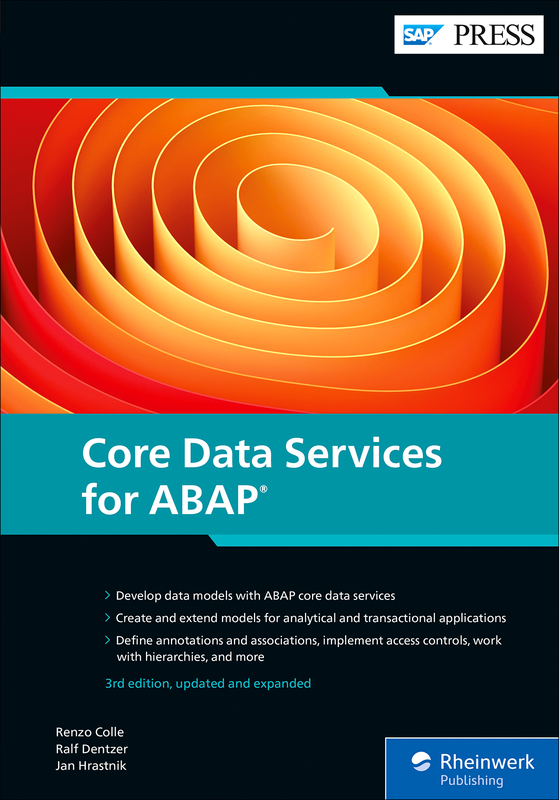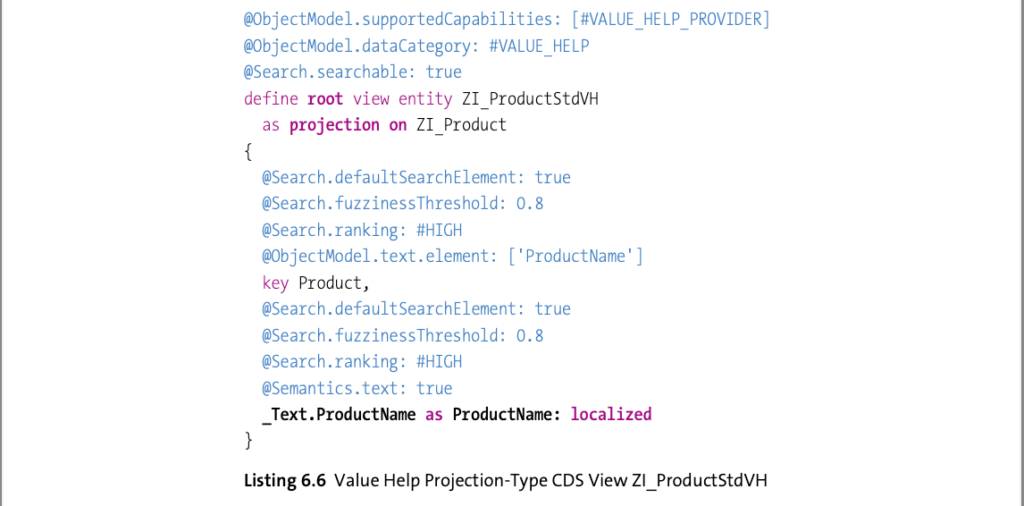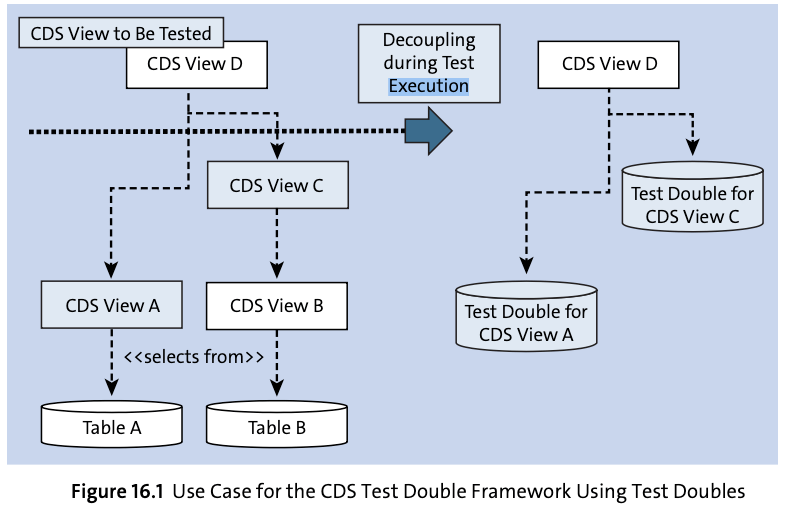Have you ever find difficulty in finding the right annotation to be used in the CDS views or modeling the CDS views itself? Have difficulty in understanding the advanced concepts like hierarchical CDS views, implementing enterprise search using CDS-based approach?
In Core Data Services for ABAP third edition, ABAP veterans Renzo Colle, Ralf Dentzer, Jan Hrastnik dives deep into the world of ABAP CDS, offering a comprehensive guide for both beginners and seasoned ABAP professionals. It is a valuable resource for anyone seeking to build a solid foundation in ABAP CDS. The book clear explanations, practical examples, and insightful approach make it a must-read for any aspiring ABAP Developer role.
Core Data Services for ABAP
Core Data Services (CDS) for ABAP is SAP’s latest data modeling language that allows developers to define semantically rich data models for analytical and transactional application development. It is becoming increasingly important for ABAP developers to understand this new modeling paradigm. This book offers a comprehensive introduction to Core Data Services for SAP ABAP.

Core Data Services for ABAP
written by Renzo Colle, Ralf Dentzer, Jan Hrastnik
It explains what CDS is, why it matters, and how to use it to develop advanced data-centric applications in SAP S/4HANA and other ABAP-based systems. By learning CDS, ABAP developers can create flexible data models that support complex analytical reporting, enable new transactional applications, and simplify integration across SAP and non-SAP systems.
With clear examples and development approaches, this book teaches essential CDS skills – from basic CDS entity definitions all the way to building complete data-driven applications.
While Core Data Services for ABAP offers an impressive breadth in its coverage of the newest developments and features of the ABAP Platform, including those up to SAP S/4HANA 2023, it also covers hot topics like the ABAP RESTful application programming model.
Structure of the Book
The book is a comprehensive guide to SAP Core Data Services (CDS) and its application within the SAP S/4HANA environment. Here’s a summary of the key chapters:
Chapter 1: Introduces the quick definition of simple CDS views and essential development tools.
Chapter 2: Covers the fundamentals and technical basics of CDS data models, presenting relevant artifacts and components through modeling examples.
Chapter 3: Explains the basics, definition, and usage of associations in CDS models, including ABAP implementation and special association types.
Chapter 4: Explores the basics of CDS annotations and their propagation logic using examples, highlighting how annotations enrich data models with semantic information.
Chapter 5: Discusses authorizations for accessing CDS data, covering access controls using CDS Data Control Language (DCL) and demonstrating their use.
Chapter 6: Provides insight into the modeling and definition of business services using projection views, service definitions, and service bindings, focusing on OData protocol–based bindings.
Chapter 7: Examines CDS table functions, enabling integration of native SAP HANA functions into the CDS view stack using SQLScript.
Chapter 8: Gives an overview of the application architecture in SAP S/4HANA and the role of CDS in modeling aspects such as field labels, semantics, foreign key relationships, etc.
Chapter 9: Explains the virtual data model (VDM) of SAP S/4HANA, formed by selected CDS views meeting quality and modeling aspects defined by SAP.
Chapter 10: Focuses on analytical applications, discussing the architecture for embedded analytics in SAP S/4HANA and how CDS views are used in this context.
Chapter 11: Covers transactional applications, detailing the role of CDS in modeling read accesses, transactional processing, locking, authorizations, business logic, and more.
Chapter 12: Introduces flexible modeling options in CDS for hierarchical structured data with examples.
Chapter 13: Demonstrates the use of CDS as a basis for modeling value helps and free-text searches in specific use cases.
Chapter 14: Addresses the lifecycle and stability of CDS and ABAP RESTful application programming model artifacts, including stability contracts and their impact on upgrades.
Chapter 15: Provides an overview of modification-free enhancements by customers and partners, explaining key considerations and developer extensibility using CDS view extensions.
Chapter 16: Introduces the creation of automated tests for CDS models and the transactional runtime, showcasing the test double framework.
Chapter 17: Recommends practical ways for troubleshooting CDS and ABAP RESTful application programming model-related errors, describing relevant tools and highlighting potential pitfalls.
The book covers a wide range of topics, from basic concepts to advanced techniques and best practices, making it a comprehensive resource for developers working with SAP CDS in the context of S/4HANA.
Personal Experience with the Book
As a seasoned ABAP developer, delving into the complexities of SAP ABAP Core Data Services (CDS) was initially a daunting task. However, the book proved to be an invaluable resource in enhancing my understanding of CDS for ABAP development.
The book systematically guided me through the intricacies of CDS, starting with the basics and progressively building up to advanced topics. Chapter 1 served as an excellent primer, swiftly introducing the essentials of CDS views and familiarizing me with crucial development tools. Each subsequent chapter deepened my comprehension of CDS data models, associations, annotations, and access controls, among other crucial aspects.
The in-depth coverage of topics like business services, table functions, and the virtual data model enriched my understanding of how CDS fits into the broader SAP S/4HANA architecture.
One of the most rewarding aspects of this book was its code snippets. While working on a project that required exposing CDS models to external consumers, Chapter 6’s insights into business services, projection views, and service bindings were instrumental. The book’s step-by-step guidance allowed me to seamlessly integrate CDS models with the OData protocol, facilitating smoother interactions with external systems.

In another instance, Chapter 11 played a pivotal role when dealing with transactional applications. The detailed explanation of CDS’s role in handling locking, authorizations, and business logic was directly applicable to our project requirements. Applying these principles will assure you a streamlined development process and ensured robust transactional processing.
The book’s practical examples in Chapter 16 on automated testing became a eye-opener for me, as I never thought about creating unit tests for CDS views. I am looking forward to implementing the test double framework in future projects.

In summary, the book has been a transformative guide, elevating my understanding of CDS for ABAP development. It has become a go-to reference, aiding not only in learning but also in implementing best practices for my next SAP S/4HANA implementation projects.
Conclusion
The book leaves a lasting impression as a comprehensive and insightful guide to SAP Core Data Services (CDS) for ABAP developers. By combining theoretical knowledge with practical examples, the book equips developers with the skills needed to navigate the complexities of CDS effectively. It serves as an essential resource for ABAP developers making the transition to SAP S/4HANA, providing a thorough understanding of CDS and its application within the SAP ecosystem.
Keep the book as a go-to reference guide, especially when dealing with specific CDS concepts or challenges during development projects.










